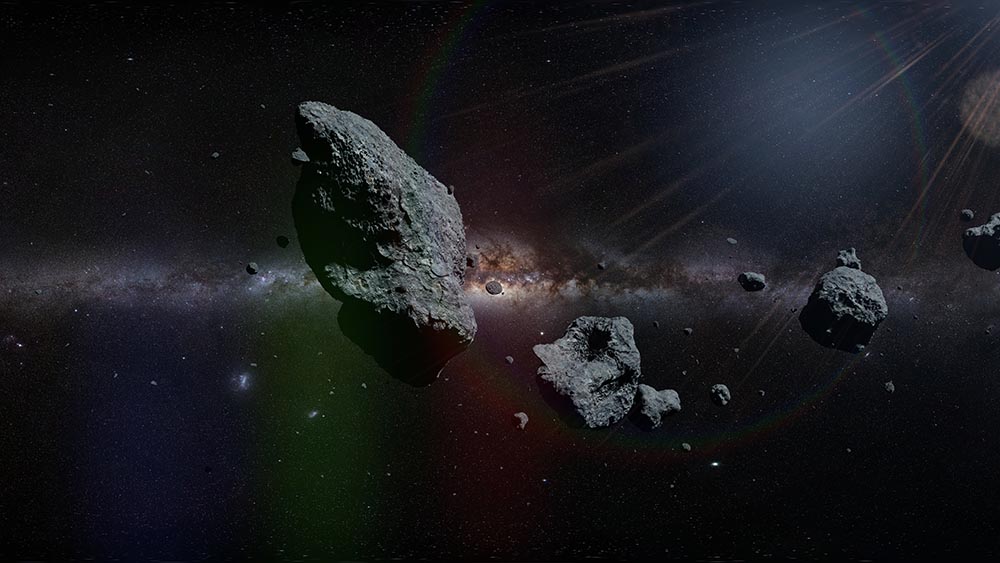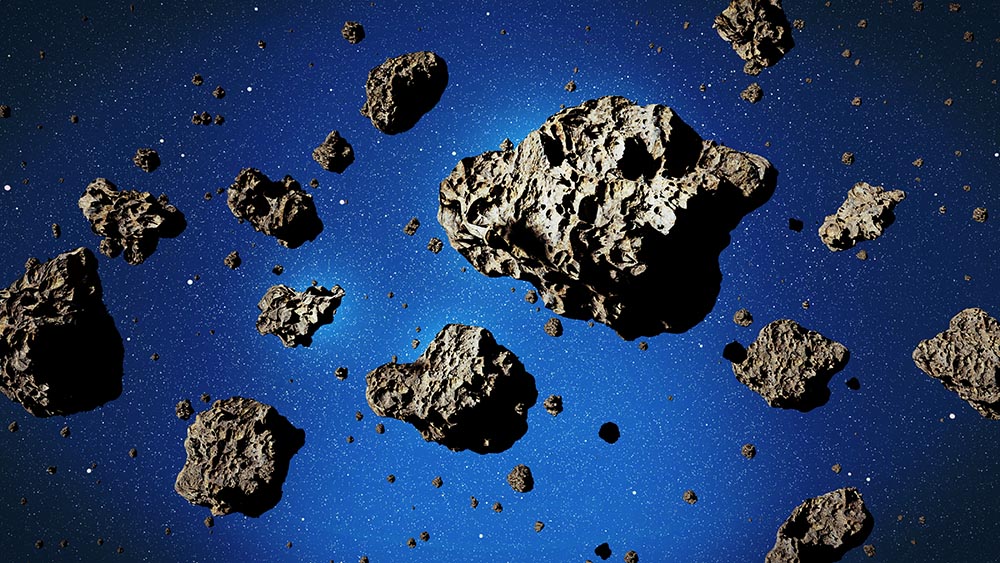What Are Trojan Asteroids? What You Need to Know!
Last Updated on

You may know what an asteroid is, but what is a Trojan asteroid? The truth is that it’s quite similar to a regular asteroid. In fact, the only real difference is where it’s at in the solar system.
So, where are these Trojan asteroids, how did they get their name, and how did we even find them in the first place? Here, we break it all down for you.

What Are Trojan Asteroids?
While most of the asteroids in our solar system are in the asteroid belt, none of them are Trojan asteroids. Instead, Trojan asteroids are those that share their orbit with a planet.
They get caught between the gravitational pull of the Sun and the planet that they’re sharing an orbit with, so you can find them at a consistent fixed point along the orbit.
If you draw a line from the Sun directly to the planet, each Trojan asteroid belt follows or trails at roughly a 60-degree point from that area.
Those areas are known as Lagrangian points, named after French mathematician and astronomer Joseph-Louis Lagrange, who deduced the points back in 1772.

How Did Trojan Asteroids Get Their Name?
Max Wolf, a German astronomer, discovered the first Trojan asteroid in 1906, 134 years after Lagrange theorized them. He named the first Trojan asteroid Achilles. Before long, more were found, with the next two earning the names Patroclus and Hektor, both participants in the Trojan War.
Since then, all the asteroids discovered in a leading group get their names from Greek warriors, while those in the trailing section get their names from Trojan warriors. The only exceptions to this are Hektor and Patroclus. Hektor resides in the Greek camp, and Patroclus resides in the Trojan camp.
It’s simply a tradition now, and since they all got their names from the Trojan War, it makes sense to call them Trojan asteroids.
Which Planets Have Trojan Asteroids?
When people talk about Trojan asteroids, there’s a good chance that they’re talking about the asteroids orbiting around the same path as Jupiter, as that’s where the vast majority of Trojan asteroids reside.
There are over 7,000 Trojan asteroids around Jupiter, but it’s not the only planet with Trojan asteroids.
In 1990, astronomers discovered the first Trojan asteroid sharing its orbit with another planet: Mars. Currently, we’ve discovered nine Trojan asteroids around Mars, 24 around Neptune, and even Earth has two Trojan asteroids! However, it’s likely that far more are out there, especially around Saturn.

How Many Trojan Asteroids Are There?
The number of discovered Trojan asteroids is constantly growing. While we know that there are over 7,000 Trojan asteroids out there, it wouldn’t be a surprise to learn that there are far more.
Still, that’s just a tiny fraction compared to the total number of asteroids in our solar system. In fact, scientists have already confirmed more than 1.1 million asteroids in the solar system. That means Trojan asteroids account for around 0.6% of all the known asteroids in our solar system!

Final Thoughts
Trojan asteroids are interesting astronomical objects that highlight the different ways that our solar system and gravitational pulls of large celestial bodies work. There’s probably far more to discover, and as our ability to peer out into the cosmos improves, we’re sure to find more!
Featured Image Credit: Dotted Yeti, Shutterstock
About the Author Robert Sparks
Robert’s obsession with all things optical started early in life, when his optician father would bring home prototypes for Robert to play with. Nowadays, Robert is dedicated to helping others find the right optics for their needs. His hobbies include astronomy, astrophysics, and model building. Originally from Newark, NJ, he resides in Santa Fe, New Mexico, where the nighttime skies are filled with glittering stars.
Related Articles:
What Is the Best Binocular Magnification for Hunting? Optical Features Explained
15 Crucial Facts About Ultraviolet Rays & the Sun
What Constellation Is Spica In? The Interesting Answer!
10 Interesting Leo Constellation Facts, Myths, and FAQs
15 Interesting Pegasus Constellation Facts, Myths, and FAQs
6 Interesting Sagittarius Constellation Facts, Myths, and FAQs in 2024!
What Are Constellations? Where Did They Come From?
8 Interesting Libra Constellation Facts, Myths, and FAQs
